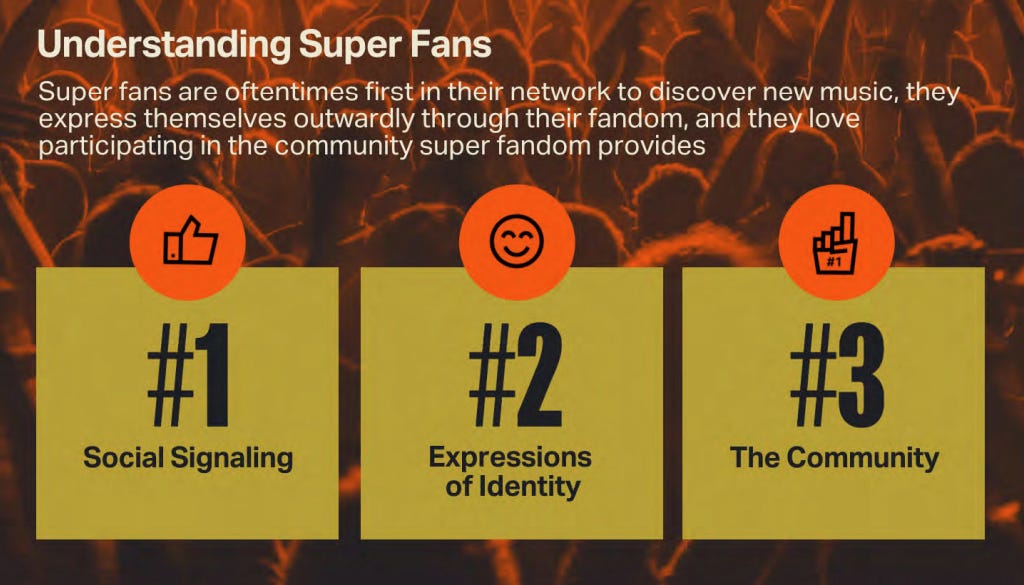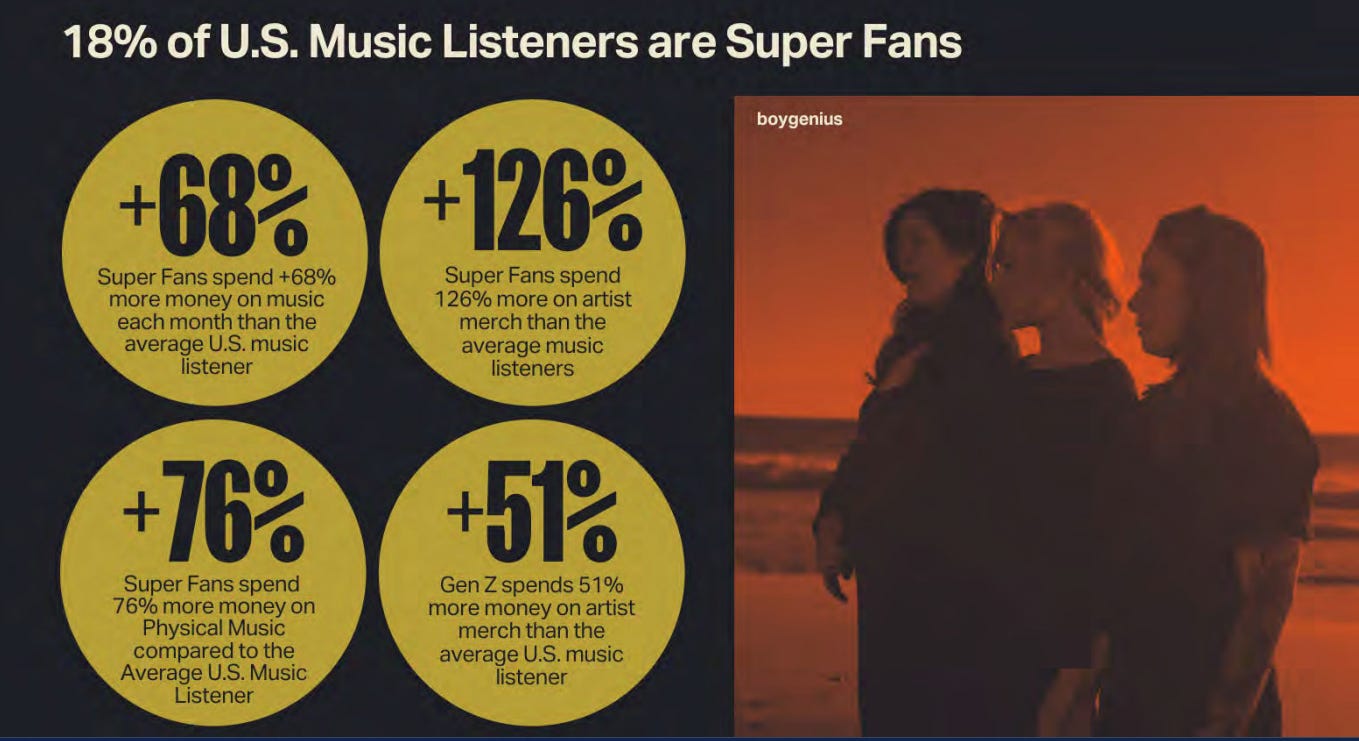Super Fans on the Rise
Direct-to-consumer vinyl purchases are growing: latest figures, current stats, and some of the main factors driving this trend

As a child, I used to think that, if I got really close to my speakers while my records were playing, my favourite artists would be able to hear me.
I knew the actual chances of this happening were zero, but that didn’t stop me from trying. My hope was that someday, somehow, my idols would notice me.
I’ve been collecting records for nearly four-fifths of my life. Most technological advances during my youth unfolded in front of my eyes more quickly than I was able to process them.
Vinyl’s decline in the late eighties, the rise and fall of the cassette during the nineties, the unchallenged supremacy of the CD at the end of the millennium, the MP3 revolution in the early noughties, the first signs of the vinyl revival in 2007—all these major events took place after I was born, but before my twentieth birthday.

It’s been a wild ride, in all respects, and the pace of change has been mad, but one thing has been constant: music fans need to feel special. We all crave that close connection with our idols, in whatever form it may take.
It’s no wonder, then, that direct-to-consumer (DTC) vinyl purchases in the US are growing. According to the latest Luminate report, in 2023 alone, artists sold almost 12 million physical records directly to their fans.
Vinyl accounted for almost 7 million (up 40% from previous years).
134,000 were cassette tapes (down slightly from 2022), and almost 4 million were CDs (up by half a million units).
Before you say it’s all because of Taylor Swift and the wave of empowerment she has triggered in her fiercely loyal fanbase, vinyl makes up about 30% of all items sold on Bandcamp by the highest-grossing artists who use the platform. Metallica bought its own vinyl pressing plant a couple of months ago. And if you’ve been to a live gig recently —any concert, big or small— you will have seen more merch stands than toilets.

Overall, DTC and retail purchases combined, music fans in the US bought 87 million physical records (including cassettes, CDs and vinyl) last year. Bear in mind these retail figures do not include the second-hand market, where a large proportion of records in all formats are traded every day.

There is no denying that streaming continues to dominate the music consumption habits of virtually every listener on this planet. But what these numbers clearly show is that music lovers are increasingly investing in physical records, and a growing proportion are choosing to buy directly from their idols.
This trend goes hand-in-hand with the rise of super fans, which Luminate also picked up on.
As fans are eager to show their loyalty, they purchase albums directly from their favourite artists in the hope that, with fewer intermediaries, more of their hard-earned cash will go straight to the musicians.
Artists have taken heed of this trend. Apart from the obvious financial benefits of removing the middleman, selling records directly to their fans helps them establish a more meaningful connection with their audience and solidify their brand.
My inner child will have to accept that, after all, our idols cannot really hear us through the speakers. But it’s nice to see that, somehow, they seem to be listening.
Thanks for reading and, as always, happy spinning!








I know this might sound silly, but there is something awesome about ordering direct from an artist, opening the whiplash mailer, and seeing a sticker or handwritten note inside.
This is good news and is helping sway my decision whether I want to press some vinyl or not. I think it’s a yes! Next year hopefully.